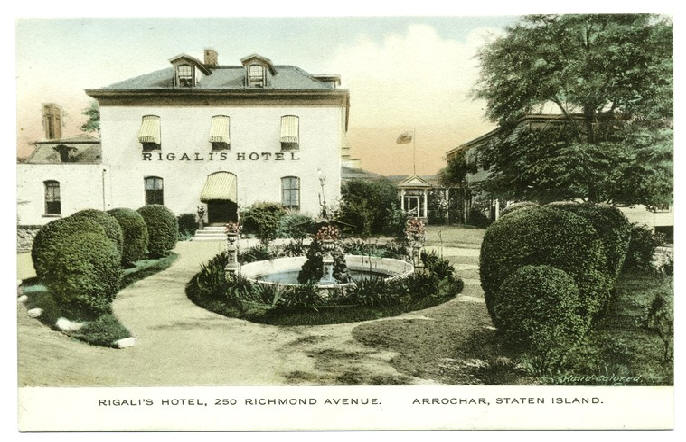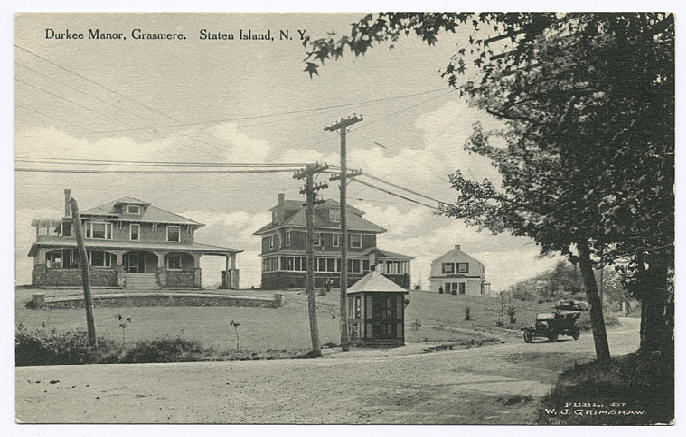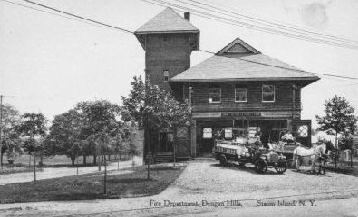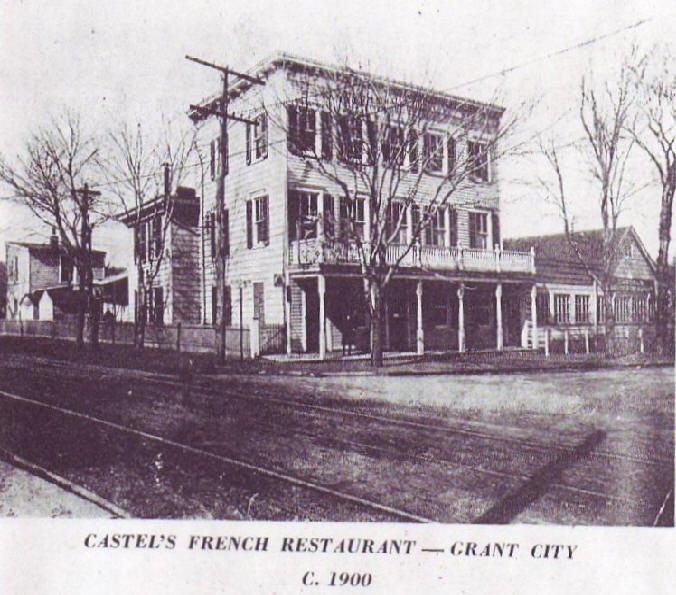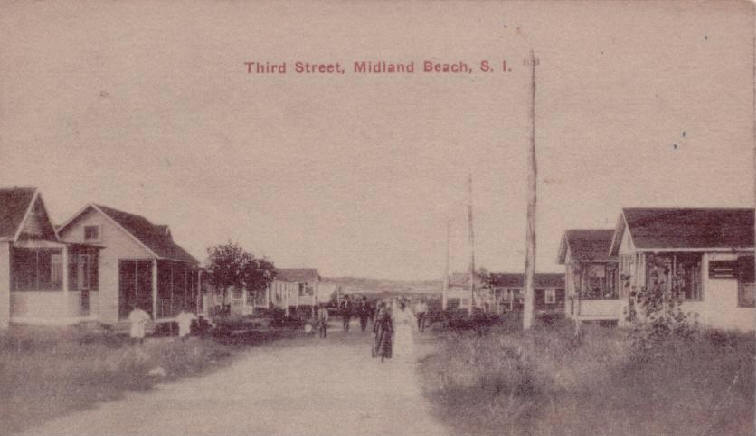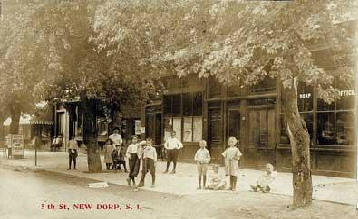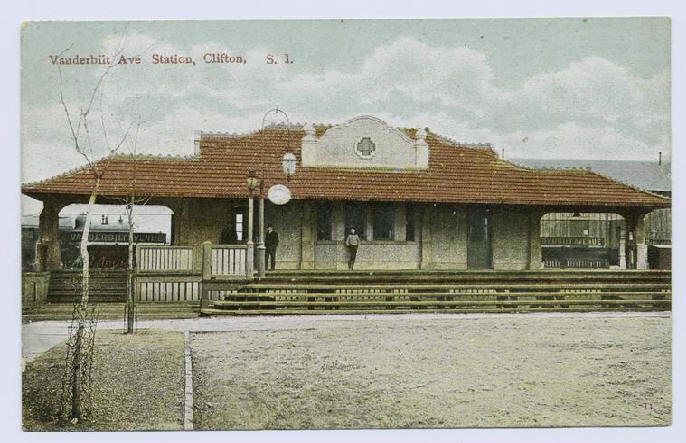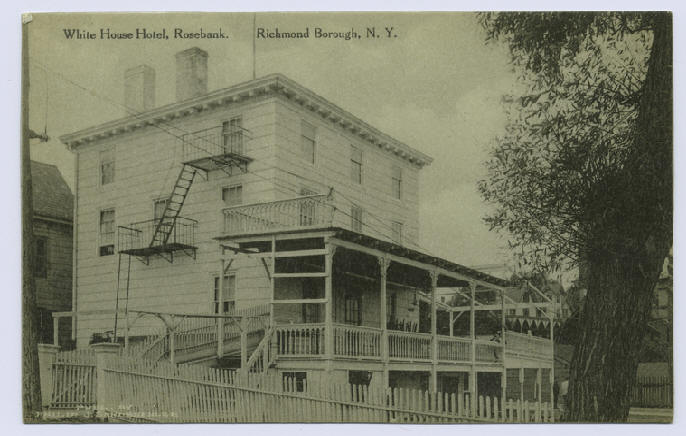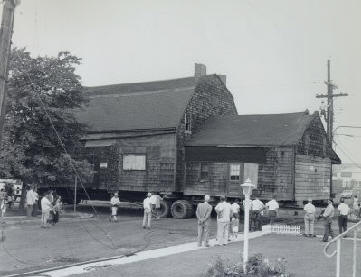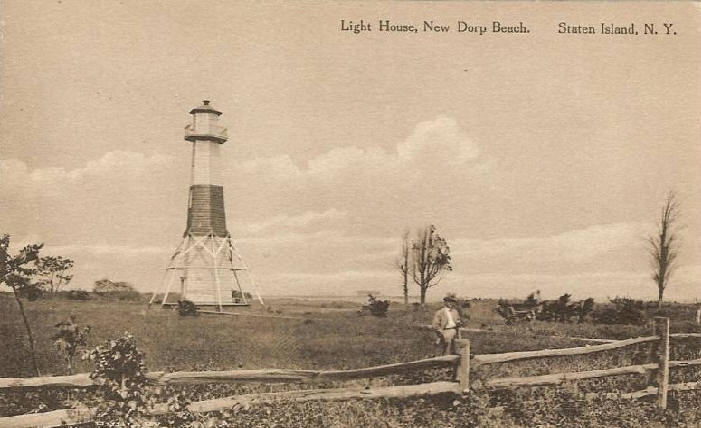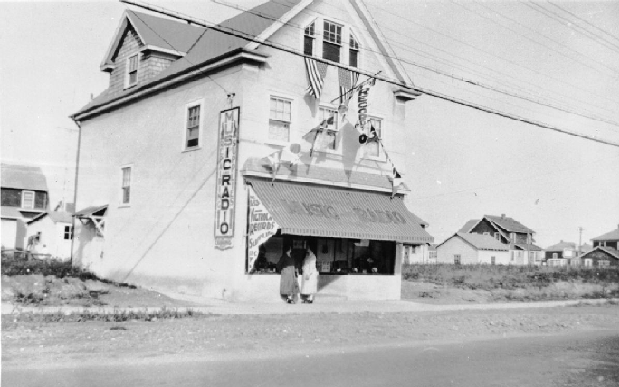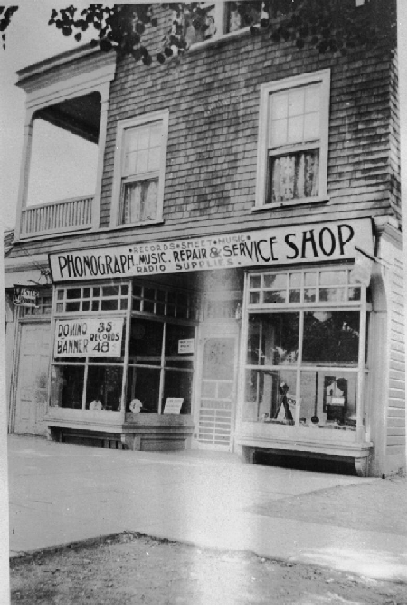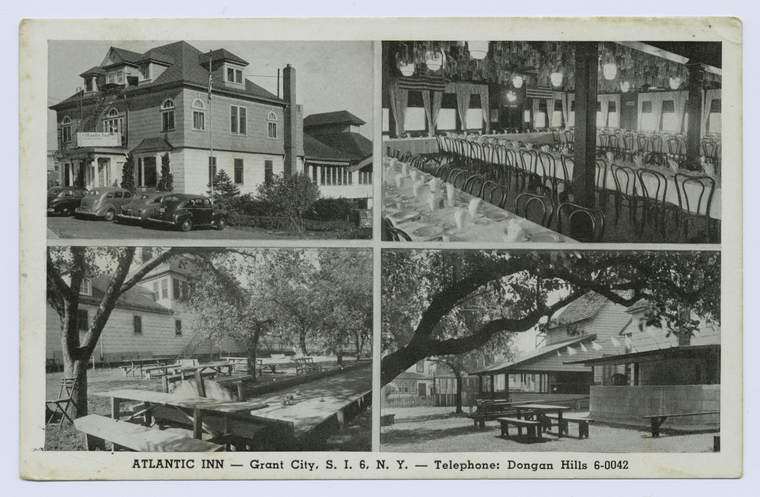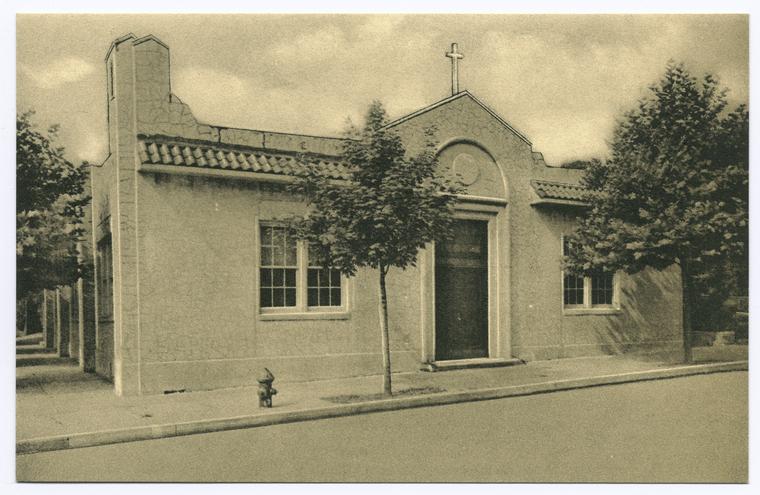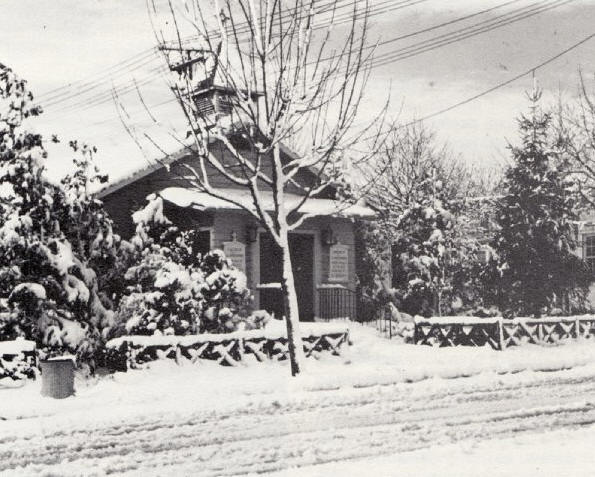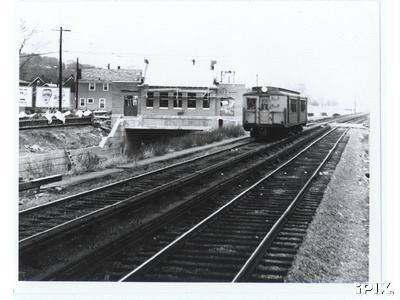SEMLER’S
PARK AND TAVERN
(Midland Park Hotel)
Grant City
Located where the Lincoln Avenue Condos are now
built
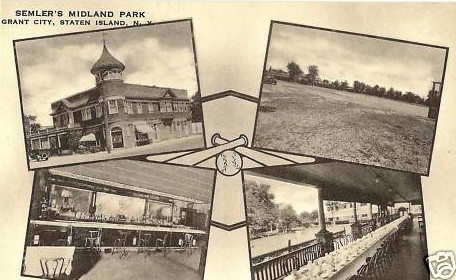
Born and raised in Grant City, I was privileged to spend many
hours of my youth participating in sports and other activities at Semler’s Park. Besides the large picnic
grounds, which took an entire city block, there was a sizable tavern at the northwest corner of the property.
Staten Island lore has this establishment on record in the 1800s/early 1900s, first known as Midland Park
Hotel, I believe.
Exactly when Gus and Ida Semler became the proprietors, I’m not
exactly sure, but I believe it was in the late 1930s. I became familiar with this establishment in the mid-1940s
as a small boy, when my father, Anthony, would take me for the “best birch beer” in the world, on tap. Of
course, he and his friends would sample the “real beer” which was also on tap.
One memory that I recall, was when Gus or one of his bartenders
served the beer, and would always wipe away the top of the head with a flat plastic or wooden device to even it
off at the top of the glass. This art has since gone the way of the trolley car that used to ride past Semler’s
down Lincoln Avenue to Midland Beach.
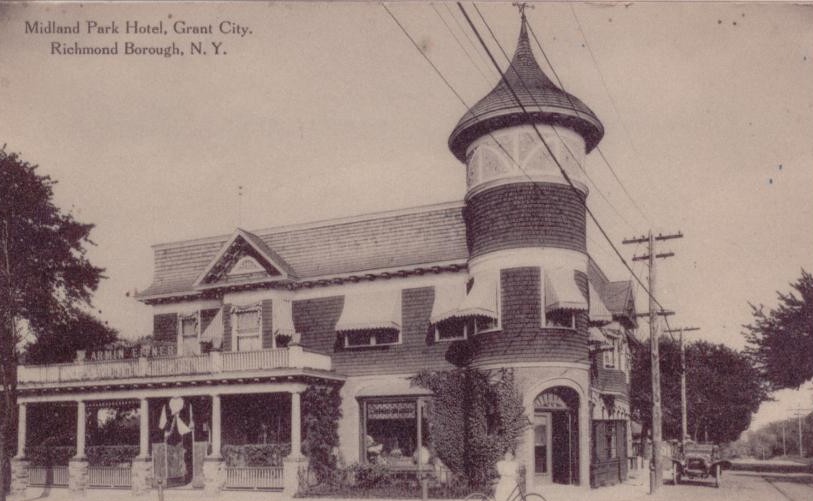
As expected, the tavern was a “hangout” for the local, male,
inhabitants of Grant City. They all seemed “so old” to me and my friends but were probably in their early 40s or
late 30s back then. My friends and I, who used to consider those men “old”, are now approaching or reached 70
years of age or older. Looking back, they were men in their prime who we thought were so “ancient”. Time puts
all things in perspective. Here I am nearly 70 years old and those “old” men were so much younger than I am
today.
Gus and Ida were quite the couple. They lived upstairs over the
bar on the 2nd. floor. It was probably the main reason that all patrons were “shown the exits” at
about 11:00PM unless there was a special event thereat which I will explain later.
I was privy to their living area because my dad was, not only a
customer, but a good friend of theirs. In fact, they occasionally baby sat for me if my parents had an
engagement of some kind to attend. I believe that they had a son who passed away at an early age and Gus would
treat me almost as his own son. Gus called me “Mickels”, a pet name he created for me.
Gus may have appeared stern or even grumpy at times but he was a
generous neighbor to those of us who knew his real persona. To this day, whenever I visit my parent’s gravesite
at Moravian Cemetery, I occasionally visit the Semler gravesite also and say a prayer while reflecting on my
memories of Gus and Ida. But, as they say, “here I digress”.
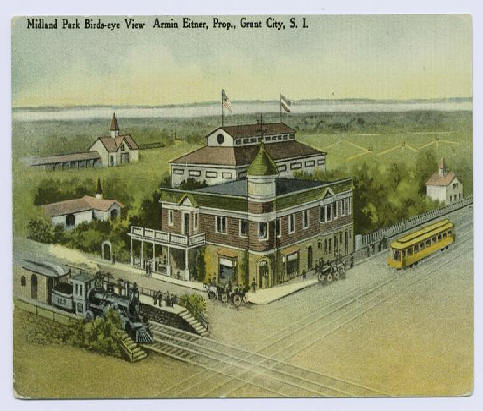
Notice how the place was
located, at the train stop from the ferry and the trolley stop from the beach
( This is the corner of Lincoln Avenue & North Railroad Avenue )
I don’t have enough space to list the names of many friends that
Gus had a direct influence on. He did things for the youth of the neighborhood back then that would be
considered a “no, no” in this day and age for fear of trivial law suits which have come into to play over
the decades.
Where else could kids play softball, baseball and most
importantly, football on someone’s property with his permission? He wasn’t too concerned that he may be sued by
some “enterprising” family if their child was hurt while playing thereat. I like to think, that in his own mind,
he was happy just to see us enjoying ourselves and developing our skills on the football field or baseball
diamond, while simultaneously “staying out of trouble”.
There were many sandlot and semi-professional teams who competed
in the various “now extinct” football leagues in the 1940s, 50s and 60s. Teams such as the New Dorp Queens, S.I.
Tigers, Melody Lounge, Marrone’s Hardware, Diamond Chateau, Grant City A.C., to name a few, all utilized
Semler’s as their home field. In fact, the Tigers and Queens brought in other semi-pro teams from the Tri-State
area. It was common place to see the Brooklyn Mariners, Throgs Neck Bulldogs, Jersey City Greyhounds, Mid-Island
Association, South Beach Robins, and the Concord Dukes competing thereat during many football seasons on Sunday
afternoons.
Admission was usually free and several hundred fans would line up
along the sidelines to enjoy the game. There were no stands for sitting in those days and since the N.Y.
Football Giants had not yet fully caught on, the fans enjoyed Sunday afternoons cheering for the local talent.
The teams were funded by an assistant coach or manager from each team who would walk the sidelines “passing the
hat”. Most spectators would toss in a “buck or two” and the proceeds would be split between the teams to pay for
transportation and equipment (sometimes, even a “beer or two” for the trip home). Incidentally, Gus never
asked for “a share” but was quite pleased with the extra customers who would line up at the bar at half time or
at the end of the game.
In addition to the sports memories, there were those of us who
loved the various organizations that would utilize the facility for annual picnics. These took place soon after
the weather became warm enough for such activities (usually from May thru September). These organizations were
made up of social clubs, local parishes and others including Coxey’s Army, Manresa Council of the Knights of
Columbus, etc.
Sometimes the local kids (myself and several others) managed to
use alternate routes into the picnic area (nice way of saying we managed to sneak in) to enjoy the
hamburgers/hotdogs/corn on the cob and birch beer. If there was a softball game that sometimes took place, we
even managed to get into the game (the highlight of the day for us). Again, here’s where Gus would come into the
picture. He knew who belonged or didn’t belong at the picnic but, would overlook the local miscreants, as long
as we behaved and caused no problems.
An occasional card game or crap game could sometimes find its way
into the area as the picnic began to wane at dusk.
Late September would bring Semler’s “Annual Clambake”. The title
was quite deceiving since there many other mouth watering treats that would be served in addition to the clams.
Fish, lobster, shrimp, corn, and chicken were among the other delicious treats. They were all cooked on an
“outdoor stone grill” which Gus would personally supervise to insure proper preparation of the fire. This
consisted of large logs placed on the pile of stones and rocks. A large fire would be started and when the
proper temperature was reached the stones would actually turn “white hot”. Gus would then oversee the
installation of the “seaweed”, wire baskets containing the food and large tarps to trap the heat therein.
Several hours later (about 2 -3 depending on the contents) the
tarps were removed, one by one, exposing each basket usually starting with the clams and chicken. Each course
was then served individually in the tavern’s party room which held 150 people or so. If I recall correctly, the
price was $7 for grownups and $2.50 for children 10 years of age up to 17 years. Young children and
infants were free. The price included unlimited amounts of beer and soda. Of course, no football was played on
“clambake weekend” since the “grill” was between the 10 and 20 yard lines.
There were other events held, such as P.A.L. sponsored boxing
matches. Occasionally, a celebrity, local politician or professional boxer would make a guest appearance to
assist the in the fund raising which the police department used to sponsor other youth activities.
~ written by Mike Lapetina
